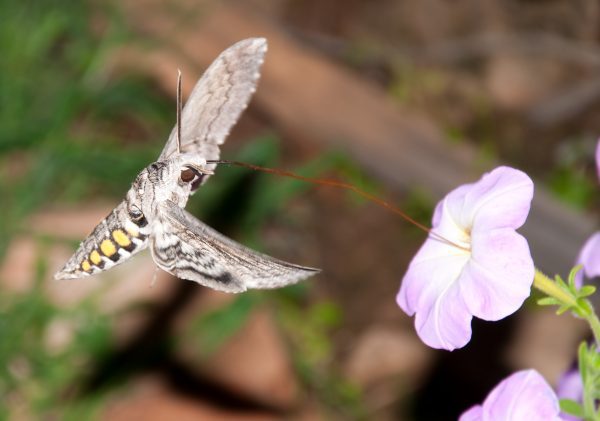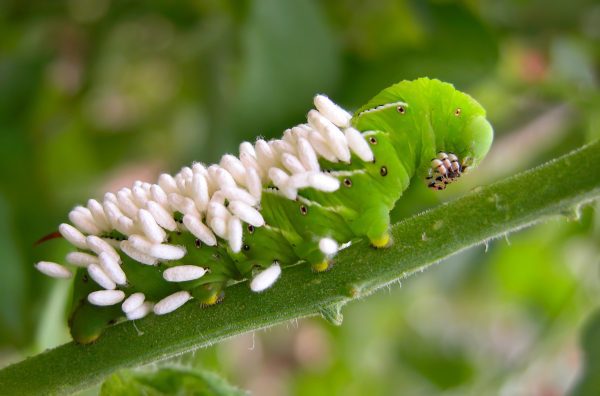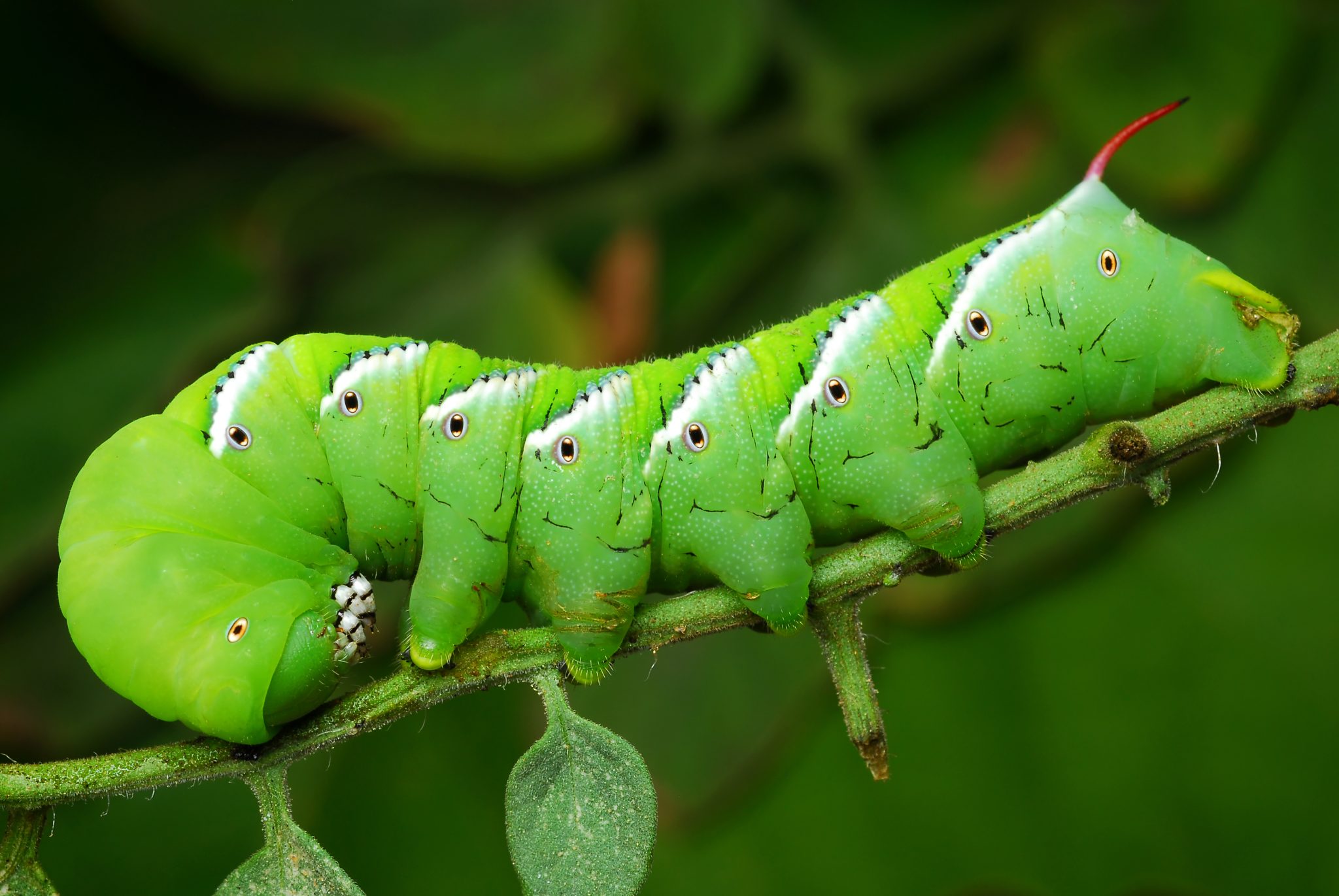Lawn & Garden

AUBURN UNIVERSITY, Ala. – Some of the most intriguing insects are caterpillars. They come in many shapes, sizes and species and appear harmless to the unfamiliar eye. However, one particular species is a wolf in sheep’s clothing for gardeners and farmers: the hornworm.
Hornworm Species

Tomato hornworm moth
Although named as a worm, the hornworm is actually a huge caterpillar. Manduca quinquemaculata, commonly known as the tomato hornworm, is a familiar pest in the Southeast. Another species is the tobacco hornworm, Manduca sexta, which closely resembles the tomato hornworm. The tomato hornworm has green margins on its white stripes, and its horn is blue or green in color. The tobacco hornworm has black margins on its white stripes, and its horn is red.
They begin life emerging from eggs on the underside of plant leaves. At this stage, they are yellow or white and contain no markings on their body. As they mature, their bodies molt while simultaneously growing green in color, giving them V-shaped markings and their iconic horn-like tail.
Hornworms will overwinter and emerge as adult moths in spring. Adult moths are giant and robust-bodied with a wingspread of four to five inches. They are grayish brown with yellow spots on the sides of the body.
Damage
The hornworm typically feeds on – you guessed it – tomatoes. However, this caterpillar is known for feeding on many other crops in the Solanaceae family other than tomatoes.
“Their favorite plant is the tomato, but they have also been found on pepper, eggplant and potato plants,” said Alabama Cooperative Extension System Entomologist Xing Ping Hu. “Additionally, many weeds can serve as alternate hosts, including horsenettle, jimsonweed and nightshade.”
Their natural green color serves as the perfect camouflage in row crops and gardens. Before you know it, this worm can defoliate a plant in a matter of days.
“Caterpillars, young and mature, blend in with leaves very well and might not be noticed until most of the damage is done,” Hu said. “However, as they feed, they create dark green or black droppings that are clearly visible.”
Hornworm Control
There are multiple ways that gardeners and farmers can prevent damage from hornworms. Review the list below to see which method is most appropriate.
Environmental Adjustment
Removing weeds can reduce the opportunity for hornworm egg sites. Surveying of your garden or crop is encouraged to ensure that the insect does not have ample area to reproduce.
Tilling the soil will also provide some prevention. The churning of soil will take care of burrowing caterpillars and pupae.
Physical Removal
Picking hornworms by hand is usually the only necessary management in most cases. Be sure to take them a significant distance away from the susceptible plant. Hornworms may be small, but they are resilient and can find their way back to the garden or yard.
Natural Enemies

Parasitized hornworm by a braconid wasp
Some natural predators of hornworms include lady beetles, green lacewings and paper wasps. The most prominent foe of the worm is the braconid wasp.
This species of wasp will lay eggs on the hornworm and parasitize their body. The wasp eggs hatch into larvae that feed on the caterpillar’s body, later creating protruding rice-like cocoons. It appears as if the caterpillar is carrying grains of rice on its back.
Hu says that if you see this occurring, it is imperative that you leave the hornworms in the garden to allow the adult wasps to emerge. At this stage, the parasitized caterpillars lose the ability to eat and will die. Later, the wasp will look for other hornworms to parasitize.
Chemical Application
Pesticides are generally not necessary. However, if other options are not effective or practical, you may consider applying a product to kill smaller worms before severe defoliation.
The choice of insecticide is the EPA-approved natural product Spinosad or insecticidal soap, rather than using residual insecticide in home gardens.
More information
Education of pests is crucial to the success of any garden or crop. To ensure that you are ready to combat garden invaders, gather more information from the Alabama Extension website at www.aces.edu.

